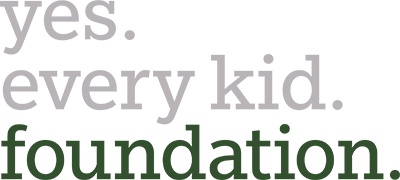yes. every kid. foundation.’s vision for policy implementation: every program intended to give families freedom in education is easy to sign up for, easy to use, and meets the felt needs and desires of families.
Why the application process matters
When it comes to education freedom programs, the initial application and enrollment process serves as the gateway to educational empowerment, wielding the power to either facilitate or impede access to education opportunities. Streamlined and user-friendly application processes not only democratize access but also empower families to navigate the complexities of educational choice with confidence and ease.
By reducing bureaucratic hurdles and minimizing wait times, efficient applications ensure that every eligible family can seize the opportunity to tailor their children’s education to their unique needs.
From boutique to boom
When Arizona launched the first education savings account (ESA) program in 2011, it was a watershed moment for educational and ushered in a completely new way of delivering public education for government administrators. On paper, it worked, awarding 90% of public education funding directly to parents of qualified students to provide the educational necessities that would otherwise be bundled, packaged, and delivered by your local public school. As the first adopter, the Arizona Department of Education administrators were given just 90 days to build the car around the policy engine that made the programmatic wheels turn—from applications to appeals and everything in between.
As a policy question, surrounding states’ interest was piqued to see if ESAs were another piece of the puzzle to move education freedom forward. All eyes were on Arizona to see if the program would work. Fast forward to today and the answer is clear: ESAs serve half-a-million students and growing. But not all programs are alike. From governance, eligibility, funding, and oversight, each state has customized the program based on its unique circumstances. One thing that has remained constant amongst all states is that the time between a law being passed and a program launching remains relatively short while the scope of student eligibility and possible uses has grown dramatically.
ESA laws in Arkansas, Arizona, Florida, Iowa, South Carolina, Utah, and West Virginia all target universal or phased-in universal student eligibility criteria (with presumably many more states to follow). This change gives millions of families access to educational options they’ve never had, and takes ESAs from boutique to boom.
Preparing to scale quickly and effectively
Gone are the days of enrollment in the hundreds for new programs. Administrators developing programs today must expect to serve tens of thousands of families in the first year. States passing universal choice programs across the country have seen application numbers upwards of 30,000 following new or expanded program launches, surpassing estimates and sometimes crashing websites (see Arizona, Florida, North Carolina, Oklahoma, and Iowa). The evidence is clear, future ESA legislation and regulations must prioritize family-friendly applications and design for scale in terms of student and provider participation.
Removing barriers in the application process
Yes Foundation’s recent review of 10 active programs found the average time spent on the application was consistently about 30 minutes. However, the survey also revealed that after submitting the application, families experience long wait times to receive notification of approval. Our findings indicate that the more complex the eligibility criteria, the more challenging it is for families to provide satisfactory documentation and the longer it takes for administrators to wade through manual processes leading to significant delays.
Wait times are compounded by the fact that the program managers we surveyed reported manually verifying the various forms of student eligibility information for all applicants, as opposed to accepting parent attestations with follow-up audits, as done in other public benefit programs. With this approach, the average expectation for receiving a determination from program managers is a staggering 30 days, extending up to 8 weeks in some cases.
Such delays are exacerbated during peak seasons when there is a high volume of submissions, often due to restricted application windows, prioritized eligibility criteria, and the timing of fund availability. This can deter families from applying, especially if they are unable to apply year-round or concurrently during the school enrollment process that can take place as early as November. To mitigate these challenges, it is essential to provide year-round applications and streamline the process to the extent possible.
Lessons learned in Iowa
Signed into law on Jan. 24, 2023, Iowa’s Students First Act enacted one of the most expansive education choice programs in the country. The bill establishes an ESA program for eligible families to cover tuition, fees, and other qualified expenses at accredited nonpublic schools in Iowa. Universal eligibility is phased in over three years, with eligibility limited based on household income in years two and three.
The practical challenges for Iowa to launch were met with the same questions administrators grapple with in every state when setting up a program. Chief among them is verifying student eligibility in compliance with the law within a compressed timeframe. To meet demand, automating the application and verification processes prior to launch is essential. Unfortunately, when it comes to data sharing, governments often act like old doctor’s offices; you fill out your basic information on the first page of a clipboard, flip the page, and it asks you for the same information again, ad nauseum. Now do this for multiple children in the same family, and the burden starts to become a barrier to entry.
So, how did Iowa manage to process nearly 20,000 applications within seconds rather than weeks?
Iowa took a proactive approach. Early on, Gov. Reynold’s office made implementation a priority with the relevant state agencies needed to get it done. The state department of education quickly released a request for proposal (RFP) seeking third-party program management and used the RFP process to discover private sector solutions to efficiently validate identity and eligibility.
The state awarded a contract to Odyssey, and the vendor immediately began collaborating with the relevant state agencies to develop a customized and streamlined application process using data the state already had. When the time came to go live, thousands of applications were submitted within the first few days, and most applicants received a response in less than a minute. The heavy lift in Iowa paid off; by the end of the one-month application window, the state had approved about 18,000 awards in record time. This meant families could access their awards as soon as possible in the new school year.
Recommendations
To meet the coming demand, state policy makers and administrators must target the modern customer’s expectations: approval in minutes, not days or weeks; reduction of burdensome documentation requirements through data sharing and streamlined attestation and auditing processes; freedom to purchase inside and outside of an established marketplace with confidence; and a network of providers that are ready to partner and engage.
Some of these improvements will happen naturally through lessons learned or sheer force of will, like in Iowa. However, every program should be designed with accessibility in mind. Policymakers and administrators can start with the following recommendations:
- Ensure families can access the program year-round, and when an application window is required due to eligibility prioritization or a funding cap, align the application period with school enrollment timelines (see West Virginia Hope Scholarship).
- Require the state or its contracted program manager to notify applicants of the application determination within a specified time. This can be included in the law, clarified in the rules, or managed through a service-level agreement with the third-party vendor.
- Include a statutory provision in all new education freedom programs requiring data sharing across relevant state agencies to automate verification of residency, identity, and other eligibility criteria (see similar language introduced in Utah House Bill 529 ).
These provisions can save thousands of administrative hours a year and the associated costs, allowing resources to be allocated to the highest-need customers. They will also require administrators to design programs capable of scaling to serve a larger, broader ESA population. Most importantly, they will give families the opportunity to access the program when they need it and the ability to make timely decisions about their children’s education.
Connect with Our Implementation Team and Learn More in Our ESA Implementation Roadmap
Our team’s first offering of the ESA Implementation Roadmap begins where many parents first encounter difficulties and where administrators struggle to deliver a system that is easy to sign up for. It’s not just about adhering to statutory requirements; it’s about transcending them to offer a user-friendly, accessible, and inclusive application process that respects the needs of all families to meet them where they are.
Read the executive summary and first chapter of the ESA Implementation Roadmap here.

